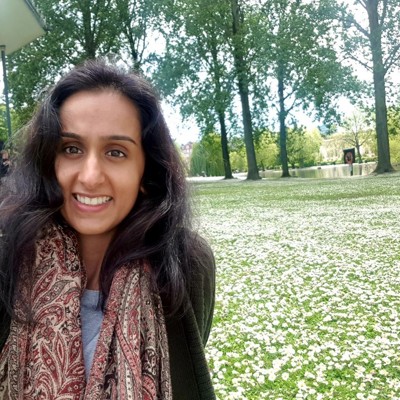Celebrating Vaisakhi
Kirndeep Kaur, a solicitor and member of our Equality and Diversity committee, explains the significance of the major Sikh festival Vaisakhi, the event behind it and the reflections it brings.
Sikhs throughout the world will celebrate Vaisakhi on 14 April this year.
Vaisakhi is a major festival, celebrated on 13 or 14 April each year. It marks the beginning of harvest in the state of Punjab and, more crucially for Sikhs, it also marks the birth of the Khalsa, which was founded in 1699 by the Sikh guru, Guru Gobind Singh Ji. The Khalsa is the body of fully initiated Sikhs. Not all Sikhs are fully initiated or practising, however all Sikhs do celebrate Vaisakhi.
The story of the birth of the Khalsa is one which I have grown up with and has helped me understand the values of what it means to be a Sikh today. It is a story of sacrifice, bravery, and undenying love for your Guru.
In the spring of 1699, during a time of darkness and unhappiness after the beheading of the Sikh Guru Guru Teg Bahadur Ji, his son Guru Gobind Rai asked people from all backgrounds to gather. Some were farmers, some were shopkeepers, some were yogis, some were Hindus, some were Muslims, some were singers, some were warriors, some were mothers and some were children.
The Guru asked if anyone would be willing to give him their head. Everyone was shocked and some even frightened by the Guru’s seemingly bizarre request. However, the Guru knew that the darkness in the world had to be healed by pure people who are unbreakable. He asked again and this time a man came forward called Daya Ram. The Guru led Daya Ram into tent and cut off his head. The Guru then came out and asked for the heads of four others. One by one, four others came forward and met the same fate.
However, afterwards all five men came out of the tent alive, this time introduced as Bhai Daya Singh, Bhai Daram Singh, Bhai Himmat Singh, Bhai Mokam Singh and Bhai Sahib Singh. The Guru proclaimed that from now on, all five would be known as the Panj Pyaree (five beloved ones) and part of the Khalsa Panth.
Members of the Khalsa would be given the surname Kaur for women (meaning princess) and Singh for men (meaning lion). Those who drank the Amrit (scared water) would become baptised Sikhs and require to wear the five Ks (kirpan, Kangha, kesh, kachera and kara). The Guru then asked the Panj Pyaree to also baptise him. The Panj Pyaree symbolised compassion (Daya), courageous spirit (Himmat), strong leader (Muhkam), lordly or masterful (Sahib) and righteous living (Dharam). In doing so, Guru Gobind Singh Ji outlined the five values that Sikhs live by.
Hear more on the story of Vaisakhi in this short video.
In the UK, Vaisakhi is normally celebrated with a parade where a procession of Sikhs, led by Panj Pyaree, will travel through the city singing shabads (divine hymns). This is called the Nagar Kirtan. The Panj Pyaree who are followed by the Guru Granth Sahib, which is placed on a float. The procession will end at the Gurdwara, the Sikh communal place of worship, where a feast is prepared and a firework show is featured. The Nagar Kirtan normally takes places a week before 13 or 14 April. Nagar Kirtans are taking place in Glasgow on 7 April and in Edinburgh on 21 April. If you happen to see one, please be sure to wave!
This year, I plan to celebrate Vaisakhi by visiting my local Gurdwara with family and friends. The significance of community within the Sikh religion is of huge importance, which is why on most celebrations, particularly Vaisakhi, many of us will celebrate by visiting our local Gurdwara and bestowing congratulatory blessings to each other on this auspicious occasion.
For me, Vaisakhi is an occasion to reflect on the past year, particularly in relation to the values of the Panj Pyaree. Reflecting on global humanitarian crises in the world just now, it is more important than ever that we come together and stand against injustice, ensuring values such as those of the Panj Pyaree are used to fight against this.
As a solicitor, I aspire to use the values of the Panj Pyaree in my professional skills, fighting for fairness and against injustice, whilst also understanding the situation of those we serve with compassion. Yet, with everyday and competing pressures, this at times can be difficult. However, I firmly believe that whilst it might not always be so easy, should those values be within your heart, this is always a good place to start.
I hope you can also take some time to reflect over this festive break, where so many festivals and dates of religious significance are taking place. From my community to yours, I would like to wish everyone a very happy Vaisakhi.

